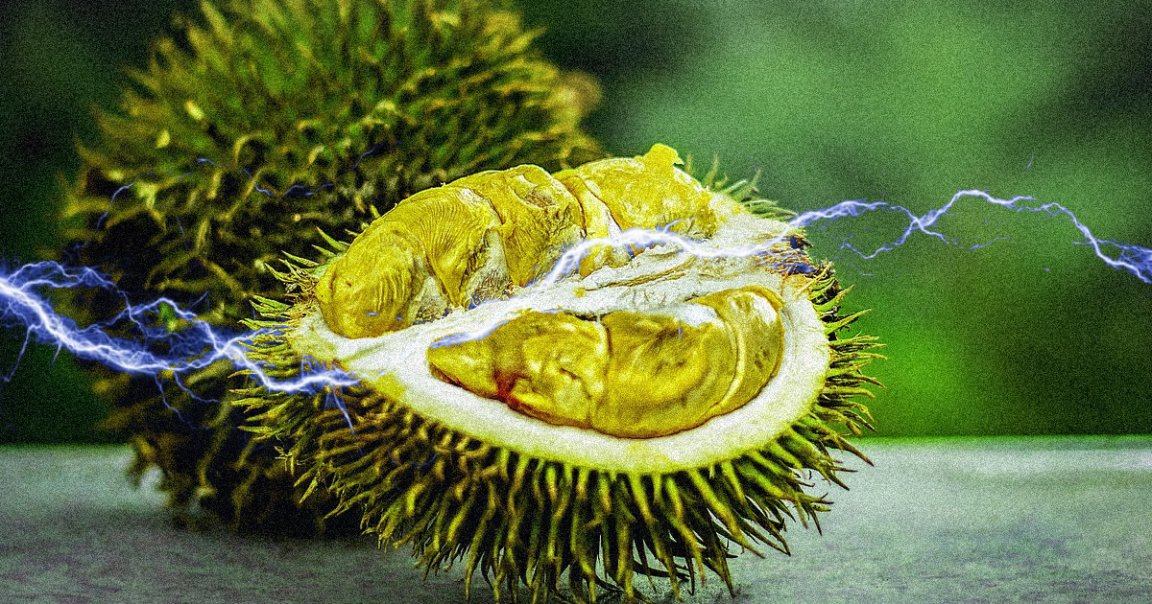
High Calorie
A team of Australian engineers is looking in an unusual place for the future of energy storage: uneaten fruit.
One of the major challenges in converting a fossil fuel-dependent energy infrastructure into something clean and sustainable is finding new ways to store energy — and a growing number of researchers have been looking into biowaste as a possible answer, according to research published in the Journal of Energy Storage in December. Building on research into bagasse, watermelons, pomelo peels, and even paper pulp, the engineers found a way to build ultracapacitors — extremely energy-dense storage devices — out of the jackfruit and durian.
Natural Infrastructure
In order to make use of the fruit, engineers converted it into an aerogel, which is a type of ultralight, porous material. To do that, they first heat-treated and then freeze-dried the spongy, inedible cores of both the jackfruit and durian, and then cast metal oxides onto them, according to the research paper.
The resulting carbon-rich aerogel, which looks like a cavernous piece of burnt toast, was able to reliably and repeatedly charge and discharge electricity — hinting at a future in which our energy storage depends less on batteries built from toxic metals and more on, well, old fruit.
Serving Size
It’s unclear how this process could be scaled up, especially since the ultracapacitors are dependent on the size of the fruit itself.
But compared to the processes for harnessing and storing energy that we have in place today, treating fruit cores and using them instead would undeniably be cleaner and more sustainable. It’s just a matter of figuring out how to put it to good use.
More on energy storage: Here’s how To Store Wind and Solar Energy Using Just Gravity